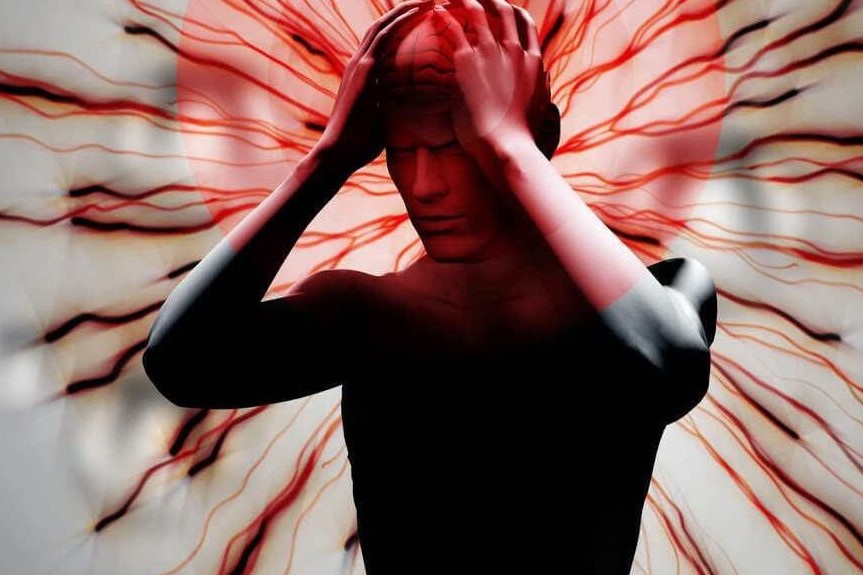
Migraine: causes, symptoms and prevention
Migraine is a particular form of headache. Its clinical relevance derives from the intensity and frequency of the painful attacks, which drastically worsen the patients’ quality of life
Migraines are characterised by certain neurological symptoms that are associated with pain
Migraine is a particular form of headache that is very painful and usually, but not constantly, affects only one side of the skull.
It is a widespread and disabling condition, often underestimated, affecting 12% of adults worldwide, with a prevalence three times higher in women: about 16% compared to 5% in men.
It is the third most common disease and the second most disabling according to the World Health Organisation.
What causes migraine? The causes
Migraine is a chronic disease characterised by the repetition of attacks, i.e. painful episodes lasting minutes to hours, interspersed with more or less long asymptomatic periods.
In extreme cases, when there is no break in continuity for more than 72 hours, we speak of a migraine pain state.
Several triggering factors have been identified that can facilitate the onset of attacks:
- stress and anxiety;
- Hormonal changes: in women, it is mainly the oestrogen hormones that are under attack, in higher concentration during the menstrual cycle and during pregnancy. Hormonal changes also occur with puberty and menopause or are due to taking the contraceptive pill;
- exposure to intense light, noise and smells;
- poor quality of sleep, with insufficient or, on the contrary, excessive rest;
- unhealthy and unregulated lifestyle accompanied by the consumption of alcohol and hard liquor and the habit of smoking;
- unbalanced diet, which includes foods such as aged cheeses, chocolate, drinks containing caffeine and more generally those containing monosodium glutamate or nitrates such as sausages.
As far as causes are concerned, there are strong indications of a familial pathology, suggesting a genetic predisposition to the development of transient altered brain activity.
There are multiple strands of studies focusing on the causes of this disease, ranging from the analysis of ion channels in the membrane of neurons to the biomolecular dynamics elicited by hormones, especially those that regulate sexual life.
In particular, the role of the so-called CGRP – calcitonin gene-related peptide, a vasodilator involved in the transmission of neuropathic pain – has been highlighted.
Migraine is also frequently associated with other pathologies such as affective spectrum disorders, epilepsy, chronic pain syndromes, allergies, asthma and circulatory disorders.
With regard to vascular comorbidity, hormonal contraceptives play a decisive role in the increased risk.
The symptoms of migraine
Intense pain, which worsens with physical activity, is usually associated with migraine:
- nausea
- photophobia or phonophobia, i.e. increased sensitivity to light or noise
- sweating
- difficulty concentrating
- abdominal pain, sometimes also associated with diarrhoea.
A migraine attack – lasting from 4 to 72 hours – is frequently preceded by the so-called prodromal phase or ‘aura’, characterised by
- change of mood
- feeling of thirst and a desire for sweet foods, e.g. chocolate
- frequent need to urinate
- irritability
- tiredness
- stiffness of neck muscles
- visual disturbances
- transient changes in body sensitivity, usually localised to the face or a limb
- motor impediment, usually of one side of the body
- difficulty with verbal expression.
The actual migraine attack is then followed by the post-dromic phase, lasting 24-48 hours, dominated by
- confusion
- impatience
- mood swings
- sensitivity to light and sound.
Prevention of migraine
Pharmacological treatment of the disorder may not be enough.
To combat migraine and considerably reduce the chances of a migraine attack occurring, special attention should be paid to prevention.
Preventive therapies, in fact, help to decrease the frequency and intensity of migraine and also act on the action of medication, making it more effective.
So, what to do to prevent migraine? One must always adopt healthy habits and, of course, reduce triggering factors as much as possible.
To reduce migraine pain, the following can help:
- relaxation exercises such as yoga or meditation, which serve to release tensions accumulated during the day and loosen the muscles in the shoulders and neck;
- a correct quantity and quality of sleep at night, including at least eight hours of rest and a regular schedule;
- constant physical activity with sports such as aerobics, swimming and running, which act on the nervous system, relieving stress and muscle tension and also improving posture;
- a healthy, balanced diet, avoiding the consumption of alcohol and caffeinated drinks. It is recommended to drink at least 1.5 litres of water a day and to favour foods rich in magnesium, selenium and zinc such as eggs, fish and whole grains.
Read Also:
Emergency Live Even More…Live: Download The New Free App Of Your Newspaper For IOS And Android
Headaches: Migraine Or Cephalea?
Migraine And Tension-Type Headache: How To Distinguish Between Them?
Paroxysmal Positional Vertigo (BPPV), What Is It?
Headaches And Dizziness: It Could Be Vestibular Migraine
Monoclonal Antibodies And Botulinum Toxin: New Treatments For Migraines
Migraine With Brainstem Aura (Basilar Migraine)


